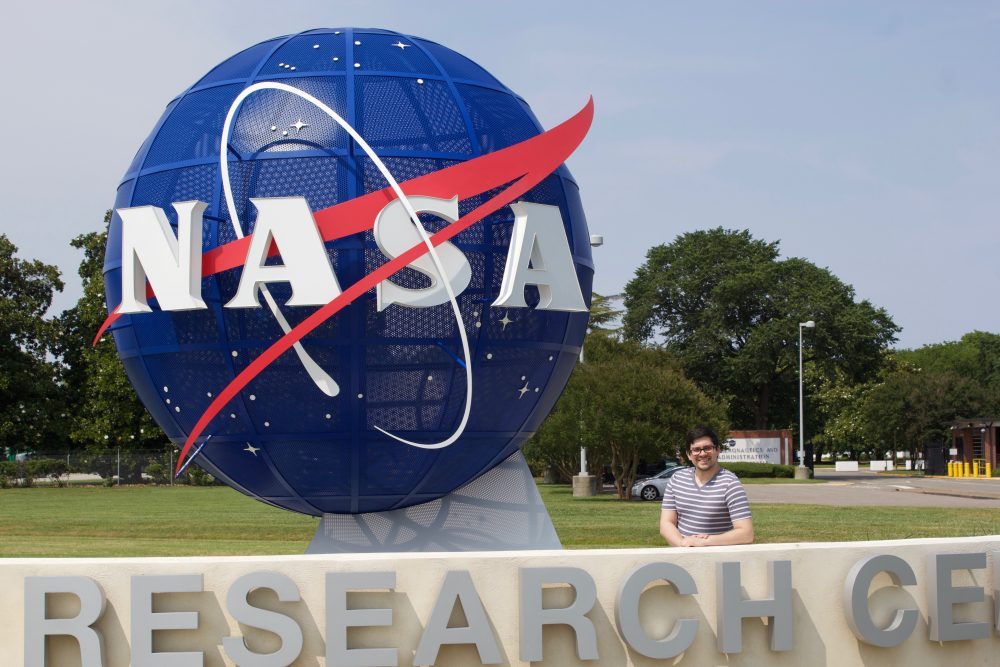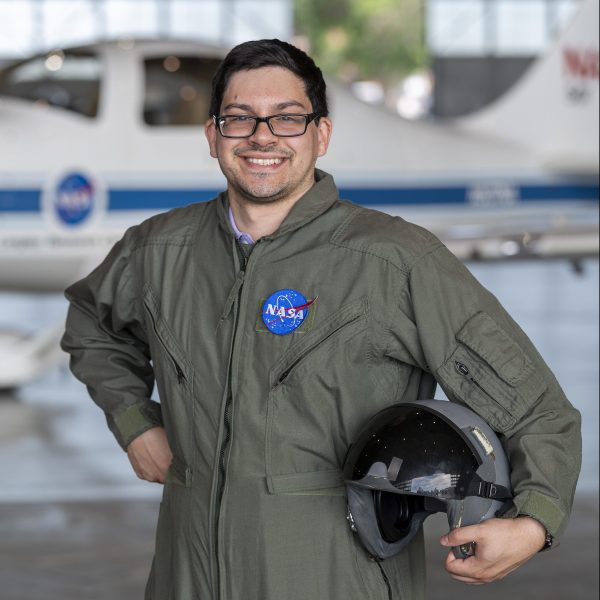While some students who hold degrees in civil engineering want to spend their careers working in industry, Alberto Torres knew early on that he wanted a different path. His research toward incorporating a probabilistic framework into topology optimization code has put him on a path to such a position. This summer, while interning with scientists at NASA Langley Research Center, Torres learned he was the recipient of a NASA Space Technology Research Fellowship (NSTRF). The fellowship will allow him to continue working collaboratively with leading engineers and scientists and give him the opportunity to acquire a more detailed understanding of the modeling, design, and potential end applications that contribute to NASA’s space technology efforts.
Torres had such experiences in mind when he chose to pursue his doctoral degree at Johns Hopkins. “To accomplish my goals, I knew I needed a program that was different. I applied to JHU because it is unlike other traditional civil engineering departments – it contains systems research, manufacturing classes, and other topics that aren’t typically found in a civil engineering graduate course load.”
Once at Hopkins, he joined the Topology Optimization Group headed by James Guest, a professor of civil engineering. Together, they determined that Torres would focus his research on incorporating uncertainty into topology optimization formulations. Topology optimization is a tool that is not traditionally associated with civil engineering, but can be utilized to design structures and components which have optimal target properties. By adding uncertainty to the topology optimization formulations while also taking the additive manufacturing process into account, Torres aims to develop an automated design algorithm that will provide entities such as NASA with structural design solutions which are proven to be both optimal and reliable under uncertain conditions.
During his summer internship at Langley, Torres had the opportunity to work with James Warner, a researcher there, on incorporating and propagating uncertainties into a topology optimization framework.
“It was a great experience, and has prepared me for the work I’ll be performing for the NSTRF. This summer experience has jump-started my research and will allow me to dive in deeper with a better understanding of the underlying issues,” he said.
Interning at NASA not only allowed him to collaborate with national experts, but it also allowed him to deepen his knowledge in a research areas with which he was already somewhat familiar. Working with Warner at NASA introduced Torres to advanced uncertainty quantification (UQ) concepts and allowed him to explore the subtleties and nuisances that arise due to the integration of UQ into topology optimization.
“[Interning at NASA] was truly out of this world. Being in such a diverse program has opened doors to me I never would have thought possible. If you told me a few years ago that I would be a civil engineer collaborating with researchers at NASA, I wouldn’t have believed you,” he said.


